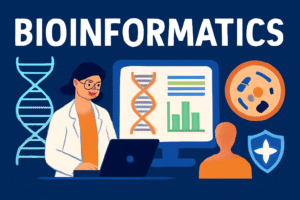Reliability and Validity: The Pillars of Sound Research in Data Science 📊👩🔬
Welcome to the fascinating world of data science, where two superheroes, Reliability and Validity, play a crucial role. Whether you’re a budding data scientist, a seasoned researcher, or just a curious learner, understanding these concepts is key to conducting meaningful and trustworthy research. Let’s dive in!
The Dynamic Duo of Research: Reliability & Validity 🦸♂️🦸♀️
In the realm of research, everything revolves around how well we can trust our data and findings. This is where Reliability and Validity come into the picture.
What is Reliability? 🔄
Reliability refers to the consistency of a measure. A reliable tool or method yields the same results under consistent conditions.
- Example: Think of a bathroom scale. If you step on it five times in a row, a reliable scale will show the same weight each time.
What is Validity? 🎯
Validity, on the other hand, refers to the accuracy of a measure. A valid measure accurately reflects the concept it’s intended to measure.
- Example: If that same bathroom scale shows your correct weight, then it’s not just reliable; it’s also valid.
Why are Reliability and Validity Crucial in Data Science? 🤔💡
- Trustworthy Data: They ensure the data collected is accurate and consistent, which is the bedrock of good data science.
- Sound Decisions: Reliable and valid data lead to better, more informed decisions.
- Ethical Research: They uphold the integrity and ethical standards of research.
- Effective Solutions: In fields like healthcare, finance, or environmental science, the reliability and validity of data can have real-world impacts.
Assessing Reliability and Validity 📋🔍
Methods to Assess Reliability:
- Test-Retest Reliability: Measuring the same individuals at two different times.
- Inter-Rater Reliability: How consistently different observers measure the same phenomenon.
- Internal Consistency: Whether different parts of a measure yield consistent results.
Methods to Assess Validity:
- Content Validity: Does the measure cover the full range of the concept’s meaning?
- Criterion Validity: Do the results correspond with a different, related measure?
- Construct Validity: Does the measure relate to other measures as expected theoretically?
Challenges in Ensuring Reliability and Validity 🚧🤯
- Balancing Act: Sometimes enhancing reliability can compromise some aspects of validity, and vice versa.
- Context Matters: What’s reliable and valid in one context may not be in another.
- Evolving Standards: As fields advance, what constitutes reliability and validity can change.
Conclusion: The Heartbeat of Trustworthy Research ❤️🔬
In the world of data science, reliability and validity are not just statistical concepts; they’re the heartbeat of all trustworthy research. They are essential for building a strong foundation of data integrity and accuracy. By prioritizing these concepts, data scientists and researchers can ensure that their work not only stands up to scrutiny but also makes a meaningful impact in the real world.
